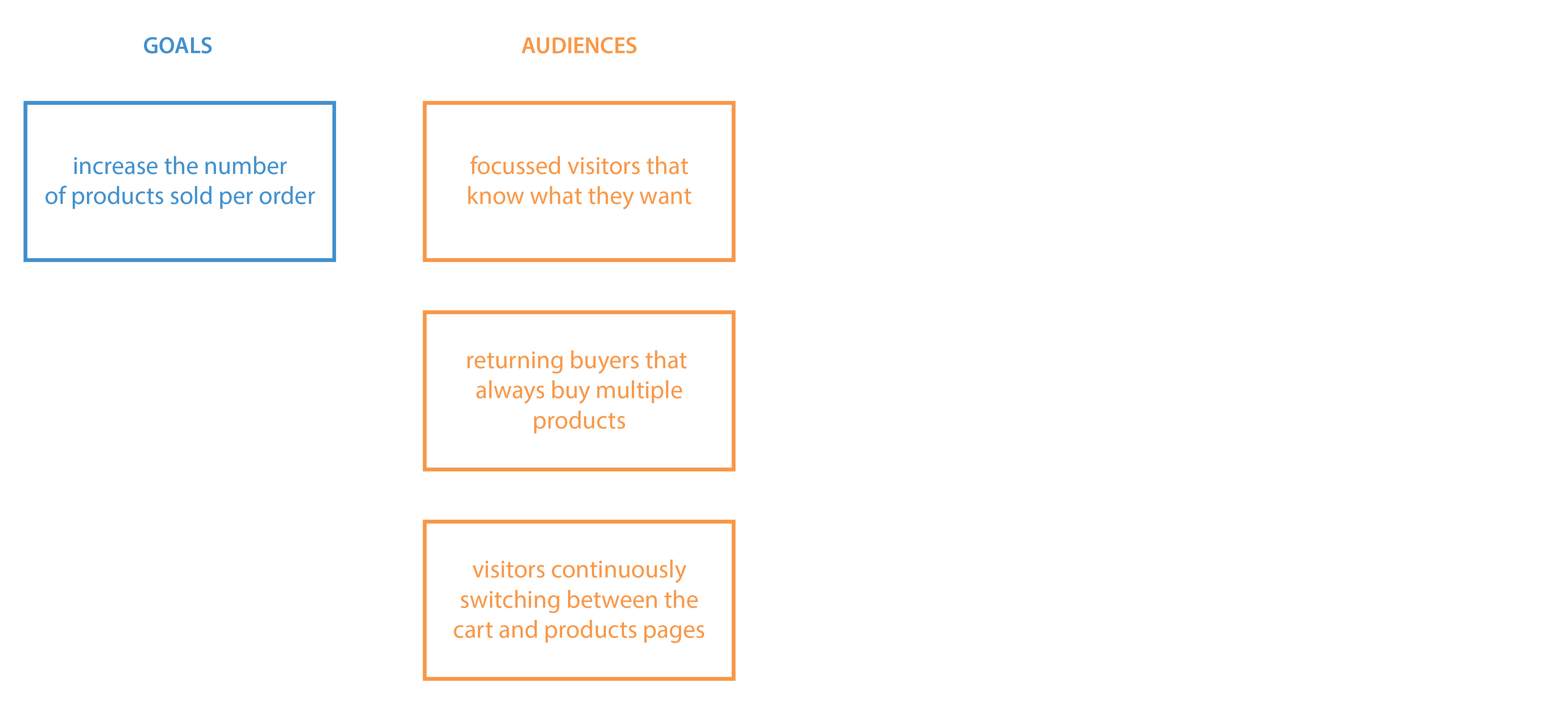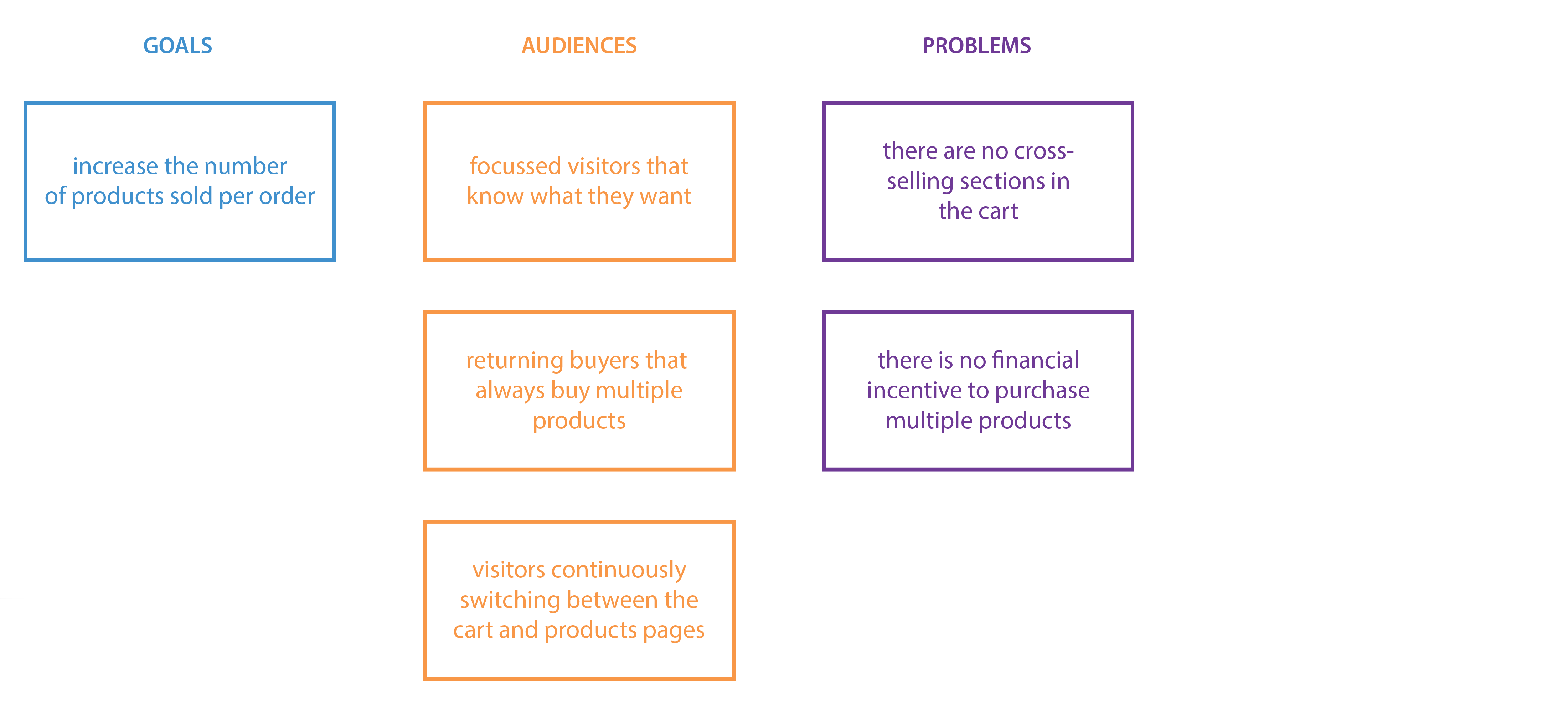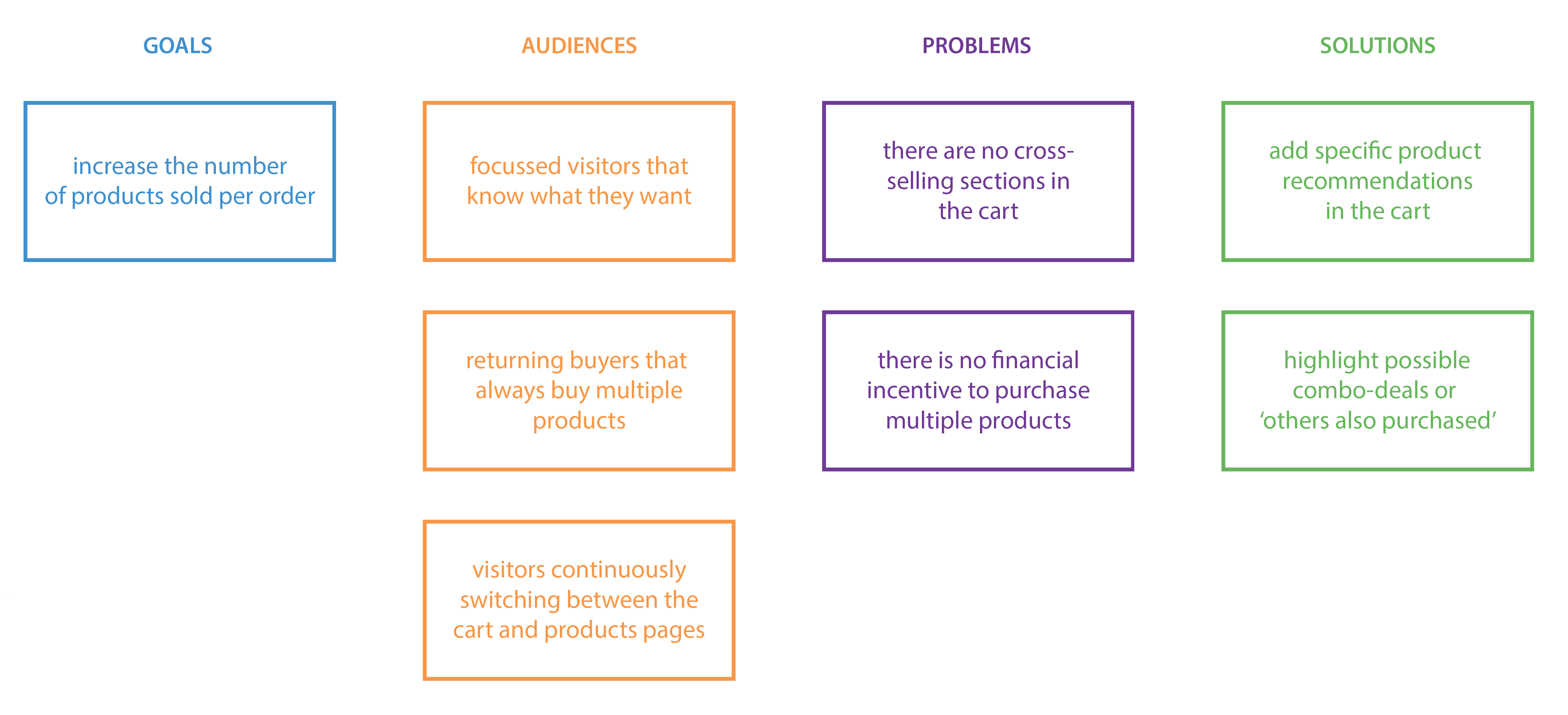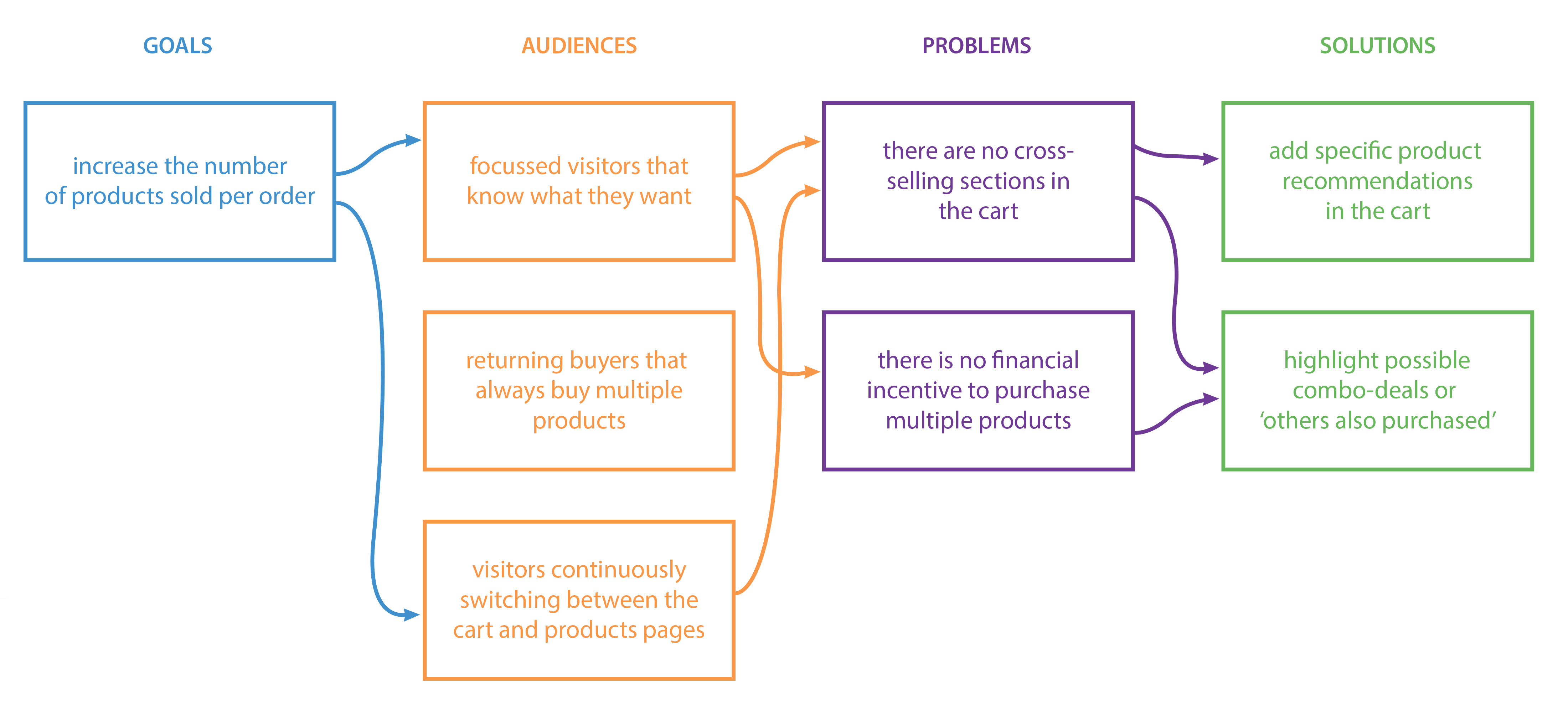We see a lot of clients that really want to get into personalisation, which is good, because we believe the most effective way for clients to reach their customers is to engage with them on an individual level. The greatest challenge companies face is to keep enthusiasm under control while getting started with personalisation, and making sure to have a structure and an overview in the ever-growing number of personalised experiences. Marketeers get enthusiastic, adding experience after experience. But developers panic, since they have less control and the end result is a website without governance. Nobody seems to know what’s going on, and it ends up being a free-for-all. Sound familiar? You need GAPS!
GAPS?
My colleague Stefania and I created the GAPS model because we needed it to keep sane. Built on the excellent PSM framework By Clearhead, we defined the four specific elements we needed to create a personalisation strategy: business goals, audiences, optimisation opportunities (or even problems) that users are facing and solutions to those problems.
Lets run through these elements: to create some accountability for your experiences, they should always have a link to one of your company’s business goals. That makes success easy to measure and it helps you sell your experiences to your boss/clients. These are your Goals.

Personalised experiences need specific audiences. We can talk about the definition of personalisation all day, but lets keep it simple: you can define your own audiences any way you see fit. You want New versus returning visitors? Go ahead. Specific marketing channel? No problem. Cart abandoners? Sure. Machine-Learned custom clusters that group your visitors by behaviour points? We can do that too. Whatever you end up with, these are your Audiences.

Now it gets interesting: you have to put yourself in your specific audience’s shoes, and run through the website. What do you want? What information do you need? What would get you to buy? More importantly, what is stopping you from buying? One of our CRO fundamentals is that “You are not your own customer”, so we know thinking like your customers might be tricky at first, but you can always ask them for feedback. That will give you more insights than you can imagine. These insights will be your audiences’ optimisation opportunities. But GAOS didn’t sound as good as GAPS, so let’s call them your Problems.

Now all you need to do is formulate an idea how to solve the problem for this specific audiences. You will obviously test this idea for the audiences, but in time, you should be able to arrive at your Solutions.

Filling in the GAPS
The great part of the GAPS model is that you can interlink your columns, what we like to call filling the gaps. Maybe your business goal impacts multiple audiences. Maybe some audiences share the same problems, and maybe a problem can have multiple solutions. All you need to do is connect everything. You now have a complete optimisation strategy for personalisation, where every hypothesis can be tracked back to a specific business goal.
Not personalising yet? No problem! Use the audiences column as testing segments, and it’ll work for you too!

Creating your backlog of hypotheses
Since you have built the entire model, creating your hypotheses is as easy as linking the columns into one sentence using the following structure: ‘We’ve noticed {Problem} for {Audience}. If we {Solution} we will {Goal}. A few examples:
-
We’ve noticed there are no cross-selling sections in the cart for focussed visitors than know what they want. If we highlight possible combo-deals or ‘others also purchased’ we will increase the number of products sold per order.
-
We’ve noticed there are no cross-selling sections in the cart for visitors continuously switching between the cart and product pages. If we add specific product recommendations in the cart we will increase the number of products sold per order.
-
We’ve noticed there is no financial incentive to purchase multiple products for focussed visitors who know what they want. If we highlight possible combo-deals or ‘others also purchased’ we will increase the number of products sold per order.
That’s it! You’ve just created an overview, testing map and hypothesis backlog all at once. Go get yourself a drink to celebrate!
Easy reporting
What you are aiming for with any optimisation strategy is to gather learnings; you need to know if your hypothesis has been confirmed. By setting up the hypotheses with GAPS, you not only learn about your experiences for audiences, but you can also easily trace the learning back to a business goal. This data-driven approach allows your organisation to make smarter, more educated business decisions.
Whether you are just getting started with personalisation, or have been personalising for a while now, this method will benefit you in some way. You’d be surprised at how such a simple framework as GAPS will get your process structured, giving you more time to focus on optimising experiences, rather than planning roadmaps. So gather your team, try it for a while and see how GAPS sets you up for success. Happy testing!







Leave a Reply
You must be logged in to post a comment.